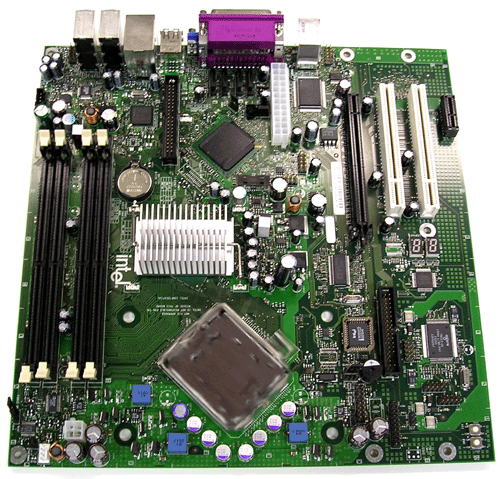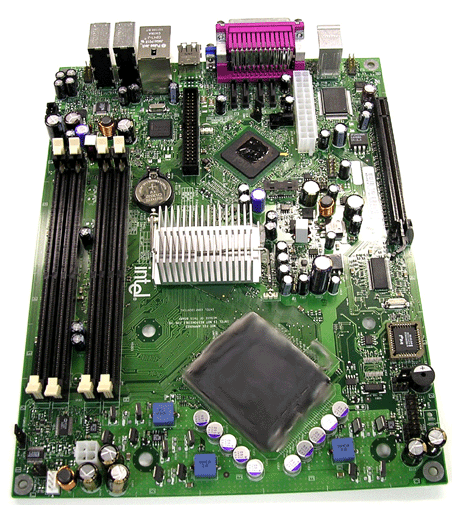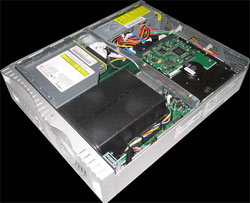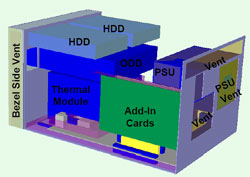Like the armada of ATX variations, the BTX form factor
is further sub-divided into three different motherboard types: BTX, microBTX and
picoBTX in descending order of size. The latter two motherboard types are
intended for OEM manufacturers and small form factor enthusiasts, as well as the budget consumer.
BTX is full sized motherboard, just like its ATX cousin.
The differences between the three types lie mainly in
the number of expansion ports they will offer, and keep in mind only the micro
and picoBTX solutions are pictured here. The full sized BTX motherboards should have a the
standard compliment of five PCI sockts. We'll have more on what BTX has in store for fans
of the mini-PC later in this article.

MicroBTX boards will measure 264mm across more or less,
and the tiny picoBTX varients will span just 203 mm.

Small Form Factor PCs and BTX
BTX has been designed from the ground up to scale well.
The two smaller BTX types, microBTX and picoBTX, reduce motherboard area mainly
by sacrificing expansion slots. They keep the core features of the BTX
form-factor intact, allowing them to be cooled by the same means as full desktop BTX boards.


To enable this to happen, the BTX specification also includes a second type
of thermal module, the 'type 2' model designed for SFF applications and
presumably rack mount server application down the road. With this in
place, the primary 'wind tunnel' configuration of a desktop BTX case will
continue even with a picoBTX board and mini case. Hopefully this will
allow for better 'enthusiast' grade SFF gaming PCs.
